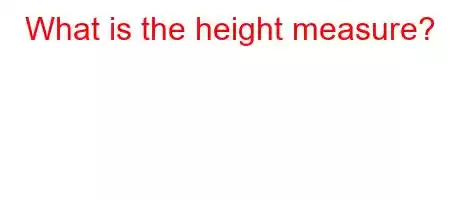Guidelines What is the height measure?
What is the height measurement?
The measurement and calculation process to find the height differences between certain points or the heights of these points is called the height measurement.
What is the direction leveling?
strong>The most easily determined directions on earth are plumb lines. and this surface is named as geoid. Elevation is the distance of earth points from the starting surface in the plumb line. The work of measuring the height differences between the points is called Leveling.
What is Automatic Leveling?
The level commonly used today is to find the elevation difference between two regions and It is a topographical measurement tool that aims to map the height difference between two regions on flat terrain. It measures downward as its working principle. Measurements are made with a measuring scope.
What is measured in Trigonometric Leveling?
Trigonometric leveling is a method of determining heights by measuring the length between two points and the vertical angle with theodolite. In works that require less precision than geometric leveling, which cannot be reached (tower, minaret, etc.)
What are the types of leveling?
Types of Leveling Height measurements 1. To find the height difference of two points (Point Leveling) 2. To find the heights of the points on a selected line (Profile Leveling) 3. To find the heights of the points on an area and to draw a plan according to a scale (Surface leveling).
What does leveling do?
What does leveling do? Leveling is for measuring height differences between points. The height differences measured are added to the heights of the points with predetermined heights and the heights of the new points are found.
How to use the leveling?
1- Using the leveling screws, the spherical level bubble is centered. 2- With the aiming device on the binoculars, the heir is directed to the container. 3- Binoculars are adapted to the eye. 4- The horizontal movement fastening screw is tightened and the vertical observing line is coincided with one side of the staff with the less movement screw.
Read: 193


